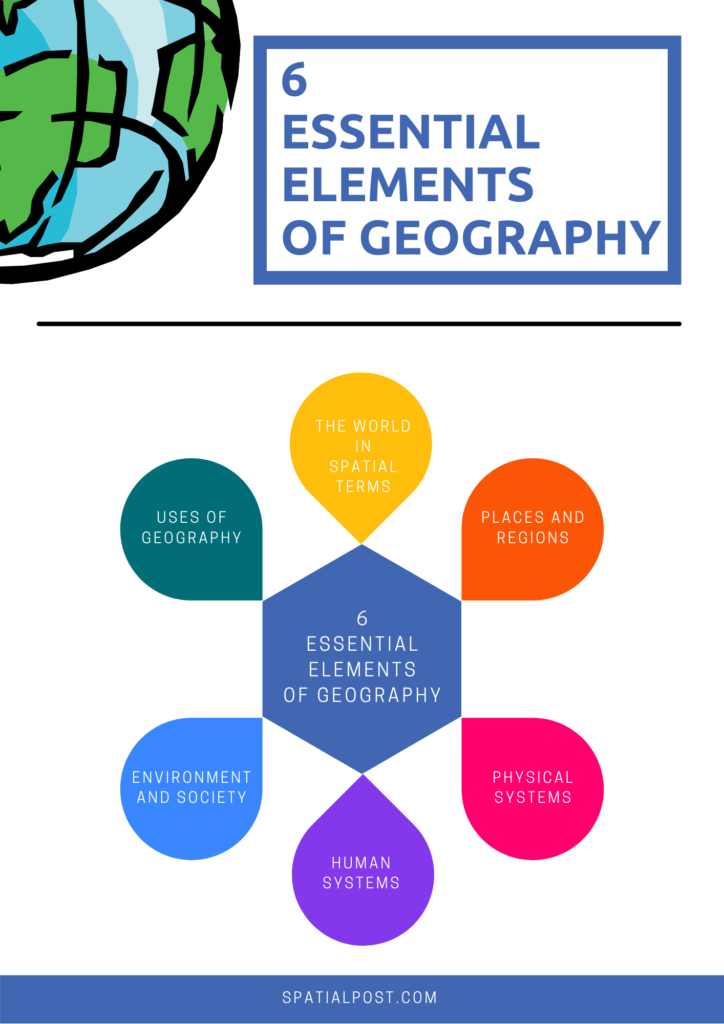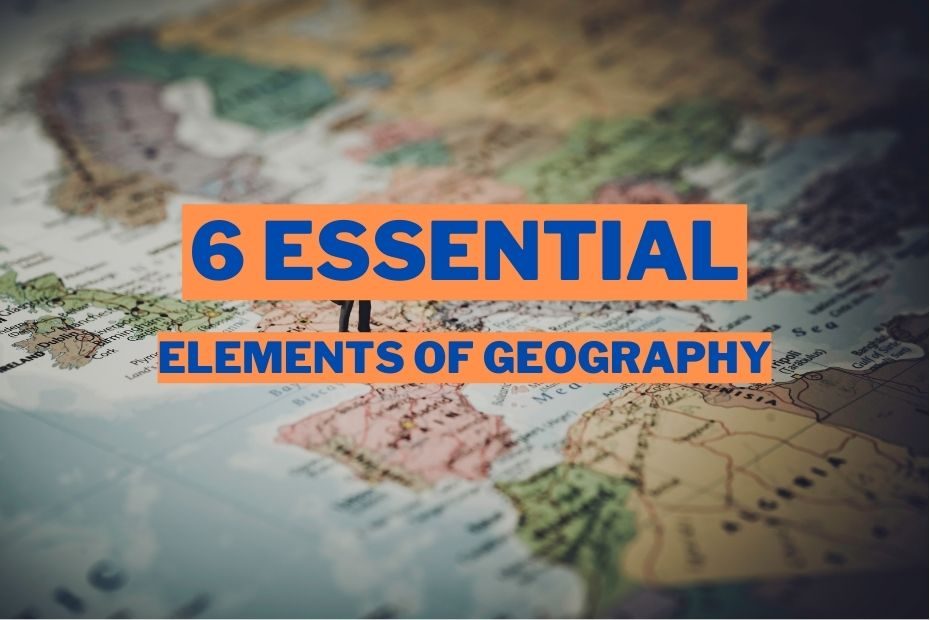Geography encompasses the study of human and physical geography, with a specific focus on patterns, processes, and problems associated with the earth’s surface. Geographers look at how humans and their environment interact in order to understand how people live and work in different regions. In this article, we will learn The List of 6 essential elements of geography that every geography student should know.
But moving further, let’s see What is Geography?
What Is Geography?
Geography is the study of the distribution and patterns of human activity on earth.
Geography is a multidisciplinary subject that has increasing importance in the study of globalisation, environmental change and population growth. Geographers investigate how humans interact with their environment and other animals, as well as how this interaction shapes their culture.
A geographer is someone who studies Earth’s natural phenomena and spatial relationships between people and places.
Read More: What Does A Geographer Do?
6 Essential Elements of Geography You MUST Know!
Geography is a wide subject with a lot of elements. This section will introduce you to six essential elements of geography that you must know.

#1. The World In Spatial Terms
It helps us understand the spatial organization of people, places and environments on the earth’s surface and how it affects our lives and society.
Mental maps are a cognitive tool that helps us to better understand the spatial relationships of people, places, and environments. They use a geographical reference system and can be used on all scales. Mental maps allow us not only to better understand our environment but also our own memories.
Geographers study the relationship between people, places, and environments by mapping, collecting data about them into a spatial context. They are known to map the distribution of human-made features like roads, buildings, and settlements as well as natural features like mountains and rivers.
Geographers often study how these features affect one another through processes like migration patterns within a region or the relationship between natural hazards and human development.
#2. Places And Regions
Places and regions are important aspects of geography as they represent a physical area with its own social and cultural characteristics.
People create regions to interpret the earth’s complexity. Regions are defined by boundaries that are determined by natural features such as rivers, mountain ranges, or deserts.
#3. Physical Systems
These physical processes are the ones that shape the patterns of the Earth’s surface.
Physical geography is the study of natural processes and phenomena on Earth. The characteristics and spatial distribution of ecosystems on the earth’s surface is a common topic in physical geography.
#4. Human Systems
Human systems are concepts or theories that focus on people’s interactions with the environment. This includes human activities and how they affect the natural world. Human systems are important because of their impact on economic development, conservation of natural resources, food production, the spread of disease, economic development, and more.
This is a very important part of geography because it shows how humans impact the environment and vice versa.
#5. Environment And Society
The environment and society connect in a lot of ways. Well, it is not a surprise that the environment affects society and vice versa.
The environment’s effects on society can be seen in everyday life. For example, higher pollution levels have been linked with poorer mental health.
Furthermore, poorer communities are more likely to suffer from water shortages or air pollution.
The reverse is also true; society has an impact on the environment by what they do to it, for example dumping waste into rivers or consuming more resources than they need to.
#6. Uses of Geography
Geography impacts all aspects of life. It affects the natural environment, culture, economy, and development.
Geography can be used to study different aspects of life like natural resources, climate patterns, landforms, population distribution and more. Geography is also used to understand human interactions with their environment like migration patterns or trade routes. The physical geography of an area plays a key role in the development of these different areas.
Geography can be used to interpret the past by finding patterns in the distribution of fossils and artefacts that we find on Earth. Geography can also be used to interpret the present and plan for the future by looking at different aspects such as population distributions, food supply, and natural resource availability.
Conclusion : 6 Essential Elements of Geography
In conclusion, geography is a diverse discipline that encompasses many different areas in order to understand how humans interact with their natural environment. Geographers have also been instrumental in developing numerous technological innovations that have increased understanding about the world around
